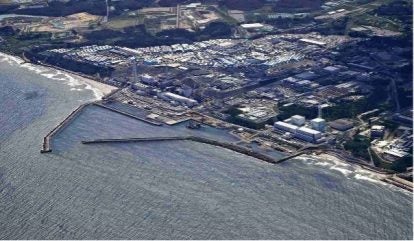
Tokyo Electric Power Company (Tepco) has completed the sixth discharge of treated water from the Fukushima Daiichi NPP site.
The tritium concentration in this sixth batch water treated with the Advanced Liquid Processing System (ALPS), which removes most of the radioactive contamination, with the exception of tritium, is far below Japan’s operational limit, International Atomic Energy Agency (IAEA) experts have confirmed.
The water was accumulated after the NPP was crippled by the massive earthquake and tsunami that struck northeastern Japan in 2011 resulting in the core meltdown of three reactors. Water was used to cool the reactors. In total, 1.34m tonnes of radioactive wastewater is stored in about 1,000 tanks at the plant, which are almost full and need to be emptied to enable decommissioning of the plant to proceed. The processed water is diluted with seawater to one-fortieth of the concentration permitted under Japanese safety standards before being released one kilometre off the power plant via an underwater tunnel. After conducting an independent on-site analysis, the IAEA confirmed that the tritium concentration in the diluted water is far below the operational limit of 1500 becquerels per litre.
This was the second water discharge in fiscal year 2024. As before, approximately 7,800 tonnes of water were released in batches not exceeding 500 tonnes a day. To date, 45,800 tonnes have been discharged from the station.
In March 2011, a tsunami strike disabled energy and cooling units at the Fukushima 1 nuclear power plant, which led to the melting of nuclear fuel in three reactors, the destruction of their hulls, explosions and the release of a large amount of radioactive substances. To date, the station’s territory and surrounding areas have been practically cleaned. However, water is constantly poured into destroyed reactors for cooling nuclear fuel fragments, which flows through gaps with strong radioactive contamination.
Japan’s decision to release the water has provoked opposition among some countries. Since August 2023, when the first stage of water discharge began, China’s Main Customs Directorate completely stopped importing seafood from Japan. In October 2023, Russia’s Rosselkhoznadzor, the Federal Service for Veterinary & Phytosanitary Supervision, also has placed temporary restrictive measures on the import of fish and seafood from Japan as a precautionary measure.






